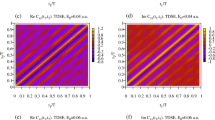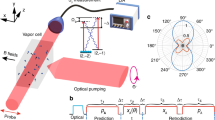Abstract
THE theory of atomic oscillations recently advanced by Schroedinger is of extraordinary importance since it throws a new light on the problems of atomic structure and, at the same time, offers a convenient practical method for calculating the Heisenberg-Born intensity matrices. It seemed desirable to apply it to as many special cases as possible. A complete theory of the Stark effect in hydrogen was, therefore, developed.
This is a preview of subscription content, access via your institution
Access options
Subscribe to this journal
Receive 51 print issues and online access
$199.00 per year
only $3.90 per issue
Buy this article
- Purchase on Springer Link
- Instant access to full article PDF
Prices may be subject to local taxes which are calculated during checkout
Similar content being viewed by others
Author information
Authors and Affiliations
Rights and permissions
About this article
Cite this article
EPSTEIN, P. Schroedinger's Quantum Theory and the Stark Effect. Nature 118, 444–445 (1926). https://doi.org/10.1038/118444a0
Issue Date:
DOI: https://doi.org/10.1038/118444a0
Comments
By submitting a comment you agree to abide by our Terms and Community Guidelines. If you find something abusive or that does not comply with our terms or guidelines please flag it as inappropriate.



